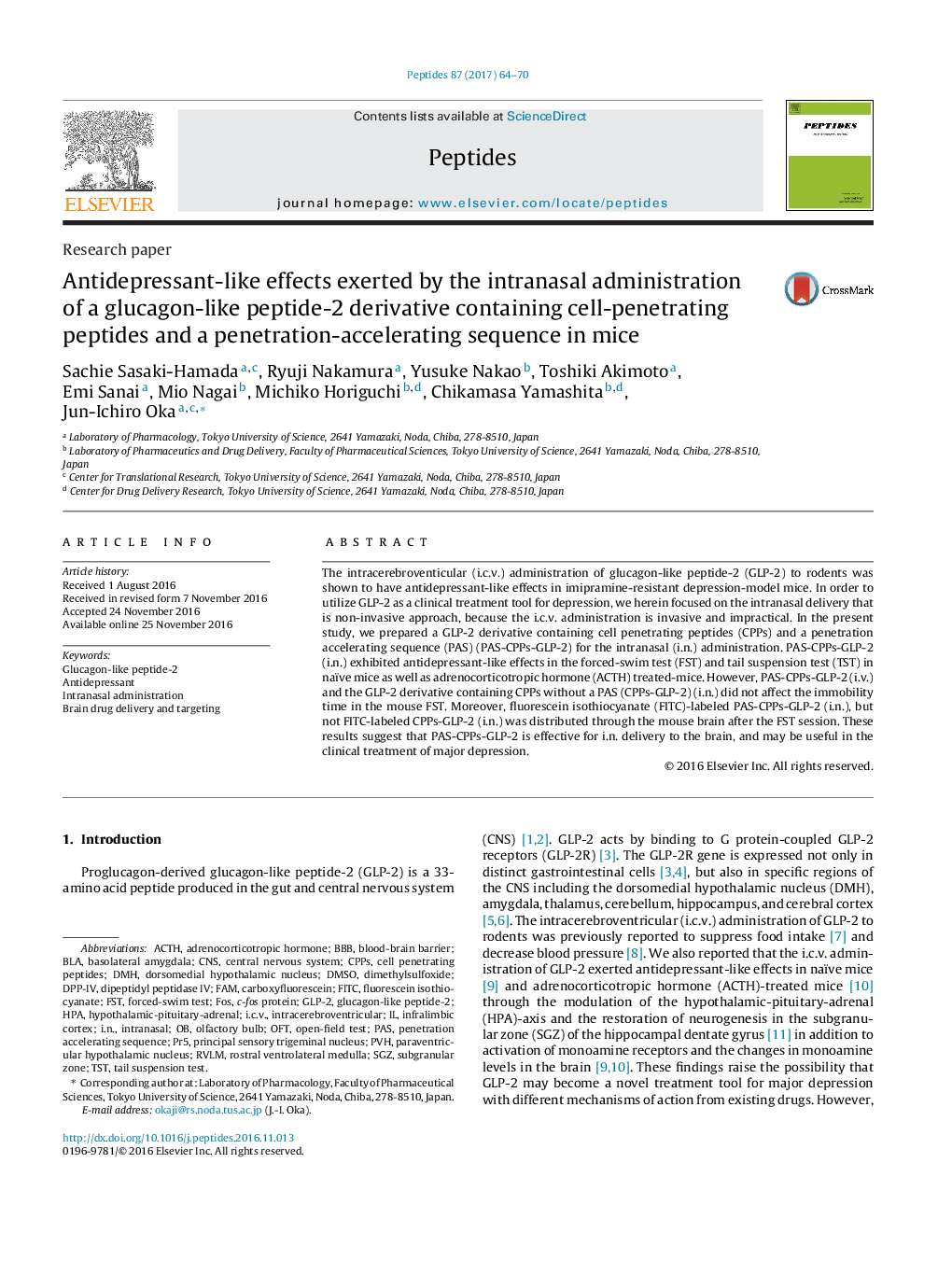| Article ID | Journal | Published Year | Pages | File Type |
|---|---|---|---|---|
| 5514760 | Peptides | 2017 | 7 Pages |
Abstract
The intracerebroventicular (i.c.v.) administration of glucagon-like peptide-2 (GLP-2) to rodents was shown to have antidepressant-like effects in imipramine-resistant depression-model mice. In order to utilize GLP-2 as a clinical treatment tool for depression, we herein focused on the intranasal delivery that is non-invasive approach, because the i.c.v. administration is invasive and impractical. In the present study, we prepared a GLP-2 derivative containing cell penetrating peptides (CPPs) and a penetration accelerating sequence (PAS) (PAS-CPPs-GLP-2) for the intranasal (i.n.) administration. PAS-CPPs-GLP-2 (i.n.) exhibited antidepressant-like effects in the forced-swim test (FST) and tail suspension test (TST) in naïve mice as well as adrenocorticotropic hormone (ACTH) treated-mice. However, PAS-CPPs-GLP-2 (i.v.) and the GLP-2 derivative containing CPPs without a PAS (CPPs-GLP-2) (i.n.) did not affect the immobility time in the mouse FST. Moreover, fluorescein isothiocyanate (FITC)-labeled PAS-CPPs-GLP-2 (i.n.), but not FITC-labeled CPPs-GLP-2 (i.n.) was distributed through the mouse brain after the FST session. These results suggest that PAS-CPPs-GLP-2 is effective for i.n. delivery to the brain, and may be useful in the clinical treatment of major depression.
Keywords
RVLMPr5ACTHPVHGLP-2SGZTSTFOSOFTi.c.v.intracerebroventricularFSTDPP-IVDMHFITCFAMBLAbasolateral amygdalaCPPsDMSOrostral ventrolateral medullaopen-field testforced-swim testTail suspension testIntranasal administrationIntranasalCNSdipeptidyl peptidase IVDimethylsulfoxideBBBcentral nervous systemAntidepressantfluorescein isothiocyanateinfralimbic cortexBlood-brain barriersubgranular zoneHPAPASPrincipal sensory trigeminal nucleusdorsomedial hypothalamic nucleusparaventricular hypothalamic nucleusadrenocorticotropic hormonehypothalamic-pituitary-adrenalc-fos proteinGlucagon-like peptide-2Cell penetrating peptidesolfactory bulbcarboxyfluoresceini.n.
Related Topics
Life Sciences
Biochemistry, Genetics and Molecular Biology
Biochemistry
Authors
Sachie Sasaki-Hamada, Ryuji Nakamura, Yusuke Nakao, Toshiki Akimoto, Emi Sanai, Mio Nagai, Michiko Horiguchi, Chikamasa Yamashita, Professor Oka,
